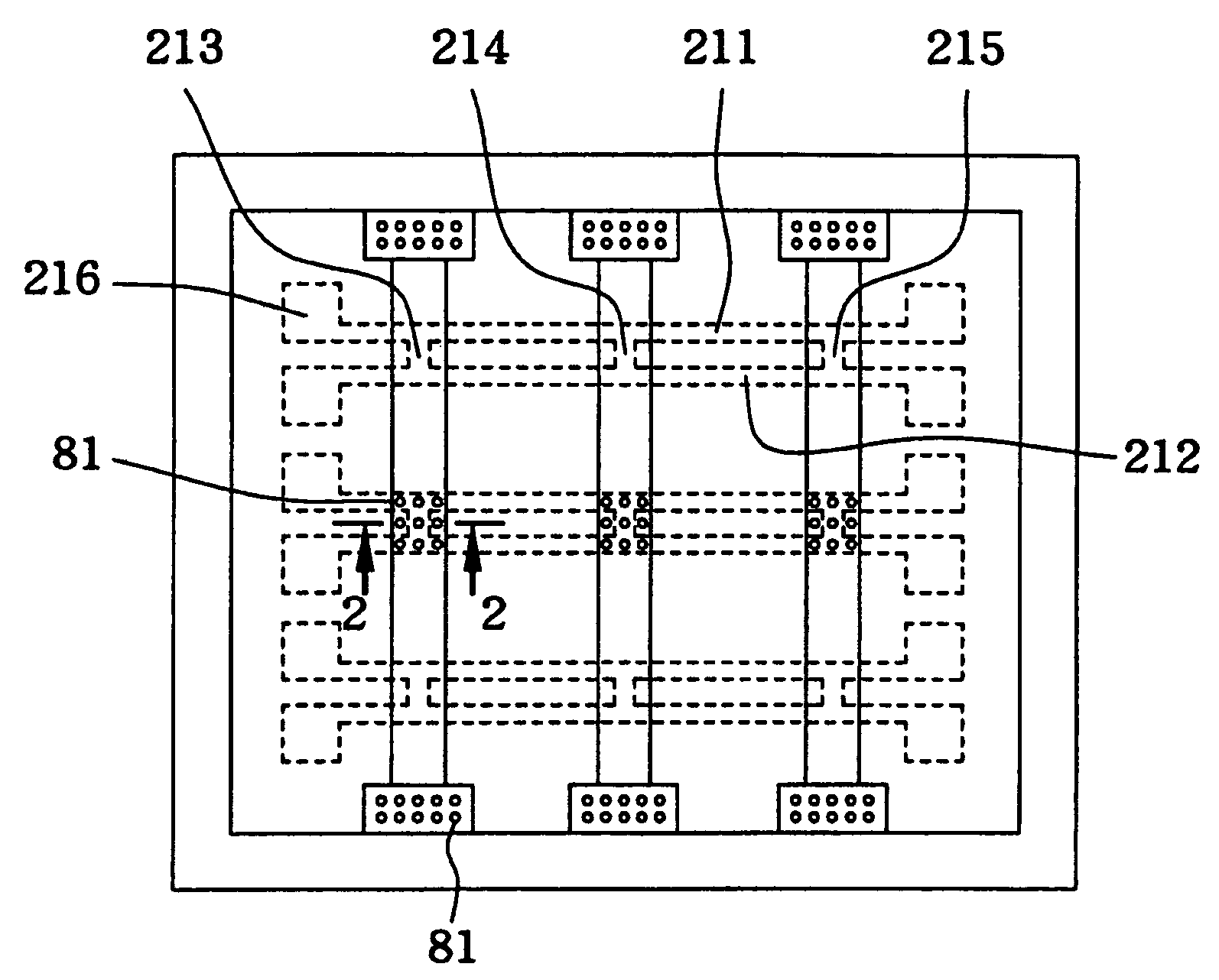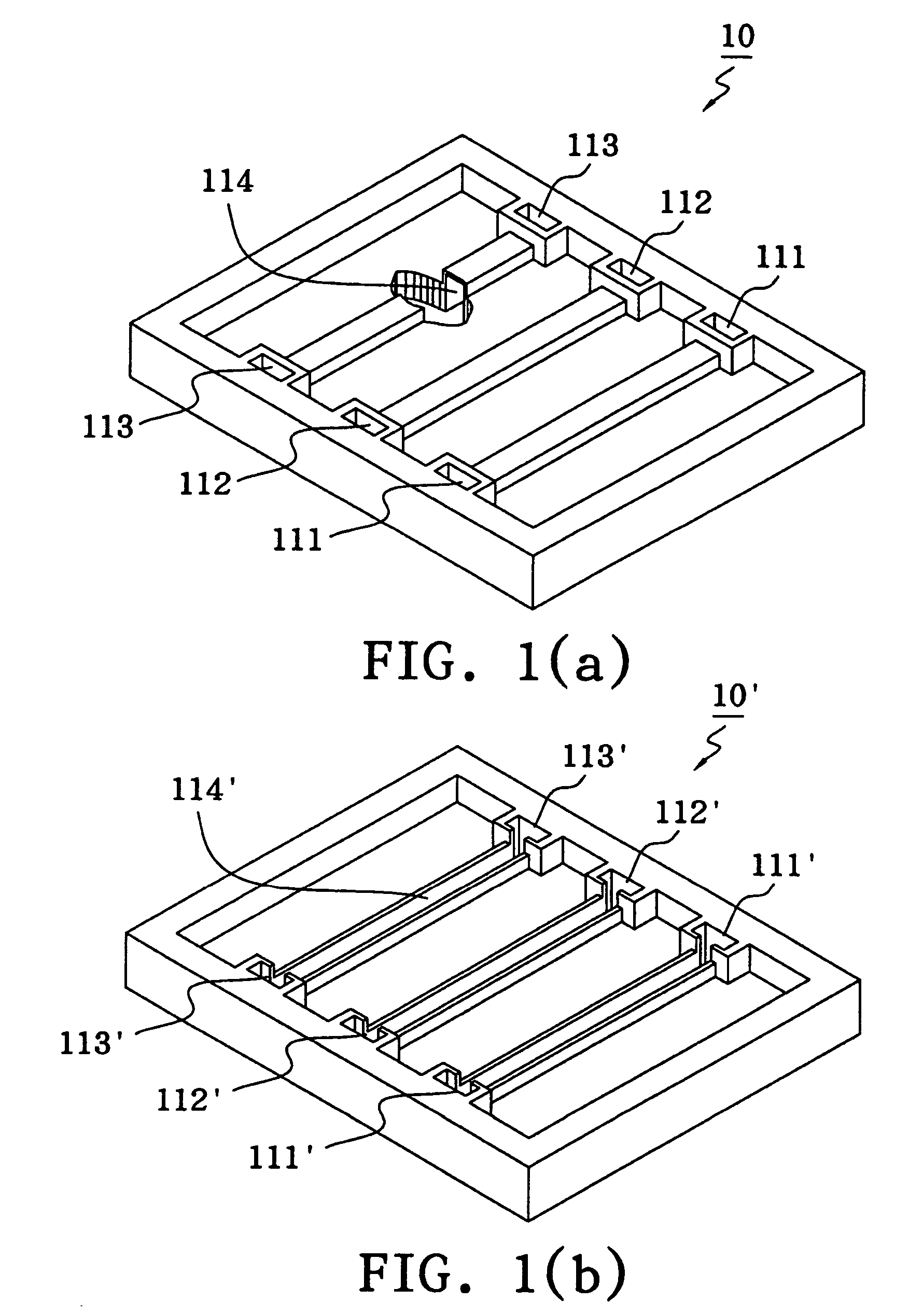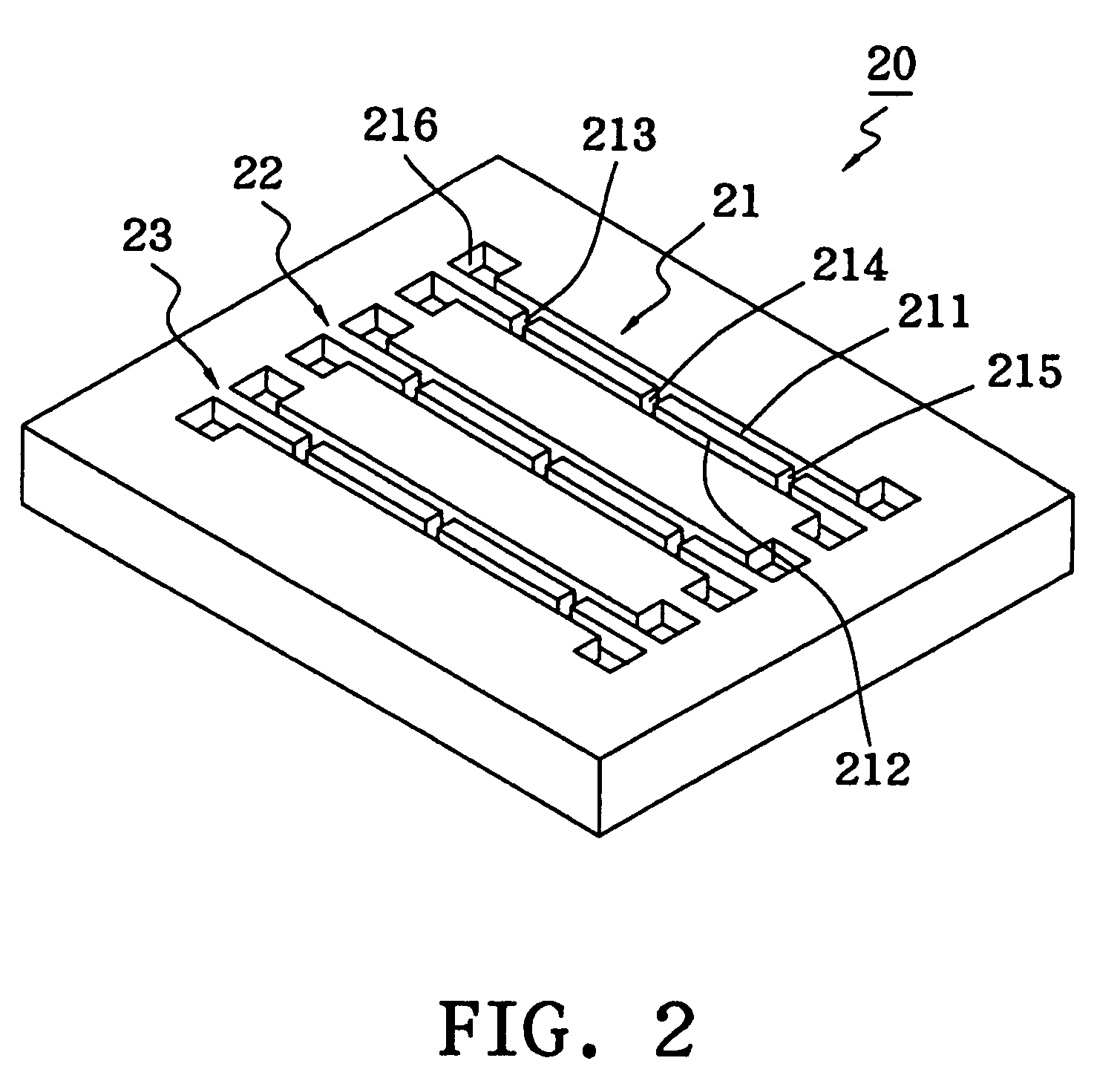Microfluidic device with network micro channels
a microfluidic device and microchannel technology, applied in the direction of fluid speed measurement, diaphragms, immobilised enzymes, etc., can solve the problems of inability to connect micro channels belonging to different networks in parallel, and the limitations of microfluidic devices
- Summary
- Abstract
- Description
- Claims
- Application Information
AI Technical Summary
Benefits of technology
Problems solved by technology
Method used
Image
Examples
Embodiment Construction
[0023]FIG. 1(a) is a perspective schematic diagram of the closed sample diversion layer of the microfluidic device in accordance with the present invention. A sample diversion layer 10 made of polymer has both of its sides equipped with three sample dropping entrances 111, 112 and 113 each, allowing any samples to be tested to reach the channels inside. For instance, if a sample is dropped into the dropping entrance 111, the sample drops will pass through an embedded sample channel 114. Furthermore, it is also feasible to design an open sample diversion layer 10′ as shown in FIG. 1(b), wherein each of the three sample dropping entrances 111′, 112′ and 113′ has a sample channel 114′ connected to it, and the sample channels 114′ have become open channels in contrast with the embedded sample channel 114.
[0024]In addition, a reagent immobilization layer 20 is provided underneath the sample diversion layer 10. Three independent, but similar, H-shaped micro channels 21, 22 and 23 are prov...
PUM
| Property | Measurement | Unit |
|---|---|---|
| inner diameter | aaaaa | aaaaa |
| widths | aaaaa | aaaaa |
| width | aaaaa | aaaaa |
Abstract
Description
Claims
Application Information
 Login to View More
Login to View More - R&D
- Intellectual Property
- Life Sciences
- Materials
- Tech Scout
- Unparalleled Data Quality
- Higher Quality Content
- 60% Fewer Hallucinations
Browse by: Latest US Patents, China's latest patents, Technical Efficacy Thesaurus, Application Domain, Technology Topic, Popular Technical Reports.
© 2025 PatSnap. All rights reserved.Legal|Privacy policy|Modern Slavery Act Transparency Statement|Sitemap|About US| Contact US: help@patsnap.com



